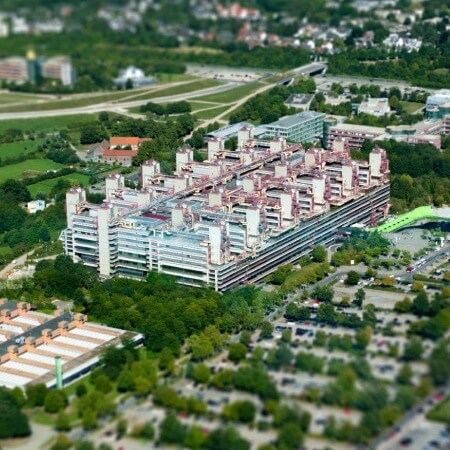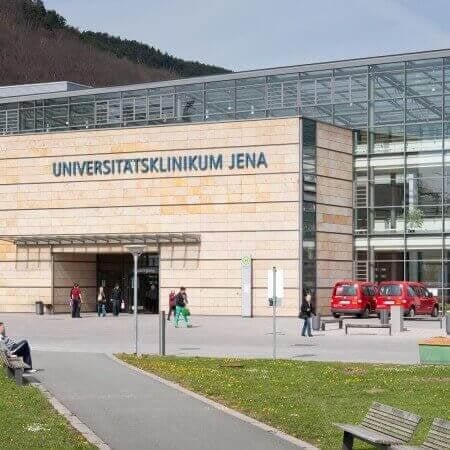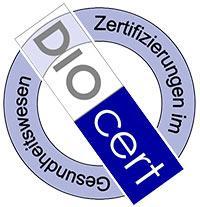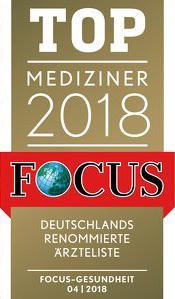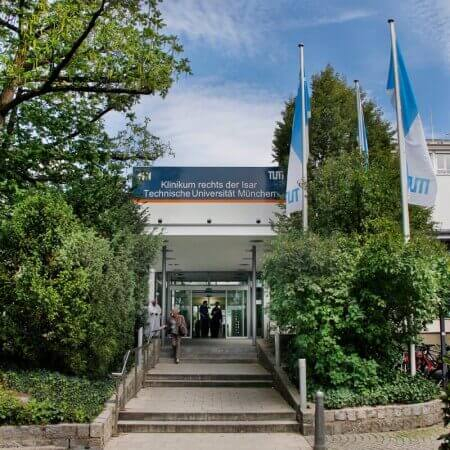Rhinoplasty is a type of plastic surgery aimed at correcting congenital and acquired nose deformities. Rhinoplasty occupies the leading place in aesthetic plastic surgery. However, medical correction is necessary not only to improve the appearance but also to restore health.
Content
- Overview
- Symptoms of nose deformities
- Indications for nose plastic surgery
- Types of rhinoplasty
- How the rhinoplasty is carried out
- Complications after rhinoplasty
- Where can I undergo nose deformity treatment?
- The cost of nose deformity treatment in Germany
- How can I undergo nose deformity treatment in Germany?
Overview
Depending on the cause, nose deformities are divided into physiological, traumatic, and pathological ones.
Physiological nose deformities occur during the growth and development of the body and arise since the nasal septum consists of structurally different tissues (bone and cartilaginous). The growth of such tissues is uneven, and the growth of the bone skeleton does not always correspond to the growth of the cartilaginous bone tissues. As a result, nose deformities occur.
Traumatic nose deformities occur as a result of mechanical damage and can be very diverse. Often, traumatic nose deformities are combined with fractures of the nasal bones. In children, traumatic nose deformities occur often. During childbirth, the child may experience dislocation of the cartilage of the nasal septum. In the process of growth and development of the bones of the facial skull, even a minor injury to the nasal septum can lead to further abnormal growth and the need for plastic surgery.
Pathological nose deformities include the disruption of the anatomy of the nasal cavity. The fact is that on the sidewalls of the nasal cavity there are the turbinates which, like the septum, can acquire a very different shape in the process of their growth and development. The most common nose deformity at this point is an enlargement of the turbinates. Such nose deformities can be accompanied with polyps of the nasal cavity, rhinitis, and other formations in the nasal cavity.
Symptoms of nose deformities
Features or symptoms of nose deformities include:
- The asymmetrical shape of the nose (especially noticeable with the curvature of the nasal septum as a result of injuries)
- Chronic runny nose (nasal breathing is disturbed, and the mucous discharges from the nose are present)
- Headaches resulting from constant pressure of the nasal mucosa on the curved nasal septum
- Loud snoring at night
- Bleeding from the nose, appearing due to thinning of the mucous membrane in the direction of the curvature of the nasal septum
- Decreased productivity, increased fatigue due to a reduced oxygen supply
- Discomfort during nasal breathing
- Frequent acute respiratory infections
- Sore throat and coughing
- Hearing impairment due to inflammation in the ear
- Decreased olfactory abilities
- Inability to focus, memory impairment
Indications for nose plastic surgery
Indications for rhinoplasty include:
- Damage and curvature of the nose as a result of trauma
- Congenital deformities that interfere with nasal breathing
- The curvature of the nasal septum (rhinoplasty with mandatory septoplasty, or independent septoplasty)
- Pointed, thickened, or hooked tip of the nose
- Saddle nose deformity
- Excessive length of the bridge of the nose
- Widened or too narrowed nostrils
After rhinoplasty, patients are often satisfied, as plastic surgery allows them to get rid of both cosmetic and functional defects. However, like any medical procedure, rhinoplasty has contraindications.
One of the most important contraindications for this plastic surgery is age. The final formation of bone and cartilage tissue occurs at the age from 20 to 25 years. However, for injuries at an earlier age, as well as for congenital nose deformities that prevent normal breathing through the nose, rhinoplasty is necessary.
Other contraindications include:
- Chronic diseases of the cardiovascular system, liver, and kidneys
- Diabetes mellitus and blood coagulation disorders
- Allergic rashes, as well as acne in the area of rhinoplasty
- Systemic acute bacterial and viral infections
- Neoplasms (both malignant and benign)
This list of contraindications is typical for all medical interventions and plastic surgery as well. However, in most cases, nose plastic surgery is possible after complete recovery from alike medical conditions.
Types of rhinoplasty
Primary rhinoplasty is a plastic surgery performed for the first time, as a rule, to eliminate congenital nose deformities, acquired aesthetic defects, and elimination of age-related changes in the nose area.
Secondary rhinoplasty is an additional plastic surgery that corrects defects in the nose from previously unsuccessful plastic surgery for the treatment of nose deformities.
Reconstructive rhinoplasty is a plastic surgery aimed at restoring the frame of the nose or soft tissues of the nose in their absence or deformities (congenital malformations, saddle deformities, deformities after major injuries, burns, removal of nasal tumors, etc.).
Functional rhinoplasty or functional rhinoseptoplasty is plastic surgery of the nasal septum and intranasal structures to restore nasal breathing.
Plastic surgery uses the following techniques in rhinoplasty:
Open plastic surgery involves making an incision in the anterior part of the nose, followed by the separation of soft tissues from the bone. After that, stitches are applied.
Closed plastic surgery is more sparing than open plastic surgery. All incisions and sutures are located in the nasal cavity. This type of rhinoplasty is considered minimally invasive.
Non-surgical rhinoplasty is also used. It is the most sparing type of plastic surgery and has the least side effects. It is a painless technique, the results of which are achieved with injections of fillers. Such rhinoplasty allows changing the shape of the nose if there is no need to carry out internal corrective surgery to eliminate serious defects.
Directly during the rhinoplasty, the plastic surgeon determines which area of the nose needs more volume and which ones need to be tightened up. To reduce certain tissues, surgeons can partially remove bones and cartilage, remove subcutaneous structures, or perform an osteotomy of the nasal bones. To enlarge certain structures, endoprostheses and grafts are used.
How the rhinoplasty is carried out
Rhinoplasty is an intervention that, like any other surgery, requires some preparation. Therefore, this plastic surgery is performed in several stages.
- A patient's consultation with a plastic surgeon.
Even in a minor medical correction, a specialist needs to assess the volume and complexity of the procedure. This can be done only after a thorough examination of the structure of the nose, determining its characteristics, identifying internal disorders, and other defects. It often happens that patients want to reduce the shape of the nose or remove the hump, and some serious pathologies are found during the examination. Besides, consultation allows identifying the exact price of plastic surgery.
- Diagnostics.
After the examination, the plastic surgeons provide patients with a list of procedures that must be undergone before the plastic surgery. At German hospitals, you can pass all the necessary tests in one or several days, without wasting time or visiting third-party laboratories. You will also need to consult a therapist and anesthesiologist.
- Appointment of the day of the rhinoplasty.
Based on the results of the examination, the doctor discusses with patients the specific day and time for the plastic surgery.
- Rhinoplasty.
Plastic surgery is performed under general or local anesthesia. Its duration depends on the complexity of the case. The doctor performs nose correction using a closed or open method, which will determine the peculiarities of the intervention.
If the open method is used, then the doctor, after all the corrective manipulations, sutures the external incisions with a special thin nylon thread, which is almost invisible. Internal sutures are applied that will heal over time. After the sutures are applied, a special bandage is placed on the nose, which has a supportive, fixing, and protective function, and helps to reduce puffiness.
- Rehabilitation.
The patient can breathe immediately after plastic surgery, even with a bandage. Those who have undergone rhinoplasty to straighten the deviated septum notice an excellent effect (improved sleep and well-being) immediately.
In about a week, the doctor removes the bandage. To speed up the recovery process, patients receive certain recommendations. The rehabilitation program is elaborated and doctors control the treatment after the plastic surgery. For about 3 weeks, you need to be less active physically.
After the rhinoplasty, the patient can experience swelling and bruising for several weeks. This is normal and will pass very soon. There may be numbness in the tip of the nose, which usually goes away within a few months. That is why the real effect can be assessed only in about six months.
Complications after rhinoplasty
Possible complications after plastic surgery for treatment of nose deformities include:
- Postoperative infection
- Thickening in the cartilaginous region of the nose due to scarring after surgery (rare)
- Graft rejection during rhinoplasty (very rare; depends on the patient's immune status)
- Bleeding from the nose in the postoperative period (1-2% of those operated)
- Transient or persistent difficulty in nasal breathing
- Adverse reaction to suture material
- Temporary or permanent sensory impairment
- Unsatisfactory aesthetic results
Reoperation is performed, if necessary, in 6 months. This need may arise in up to 10% of cases.
The absence of complications in the early postoperative period depends largely on the patient himself. The patient must remember that rhinoplasty is one of rather difficult medical procedures. Therefore, it is important to pick the hospital that specializes in the treatment of nose deformities.
Where can I undergo nose deformity treatment?
Medical tourism is becoming more and more popular these days, as a treatment in Germany ensures a much better quality of rhinoplasty.
The following hospitals demonstrate the best success rates in rhinoplasty in Germany:
- PAN Clinic Cologne
- University Hospital of Ludwig Maximilian University of Munich
- University Hospital Erlangen
- University Hospital RWTH Aachen
- University Hospital Jena
- University Hospital Bonn
You can check out the full list of German hospitals for rhinoplasty on the Booking Health website.
The cost of nose deformity treatment in Germany
The prices in hospitals listed on the Booking Health website are relatively low. With Booking Health, you can undergo treatment in Germany in the best hospitals at an affordable price.
The cost of nose deformity treatment in Germany varies, as the prices depend on the hospital, the chosen type of plastic surgery, and its complexity.
The average cost of nose deformity treatment in Germany is 7,140-11,428 EUR.
You also need to consider the cost of additional corrective procedures and follow-up care. Therefore, the ultimate cost of nose deformity treatment in Germany may differ from the initial price.
To make sure that the treatment in Germany is suitable for you, contact us by leaving the request on the Booking Health website.
How can I undergo nose deformity treatment in Germany?
It is not easy to self-organize any treatment abroad. It requires certain knowledge and expertise. Thus, it is safer, easier, and less stressful to shift some responsibility onto a medical tourism agency.
As the largest and most transparent medical tourism agency in the world, Booking Health has up-to-date information on rhinoplasty in the leading medical facilities in Germany. It is vital for successful treatment to have accurate information on the success rate of the specific hospital in rhinoplasty.
Booking Health will help you select a hospital, taking into account your wishes for treatment. We offer all the necessary services so that you safely and conveniently undergo rhinoplasty.
We want to help you and take on all the troubles. You can be free of unnecessary stress, while Booking Health takes care of all organizational issues.
Medical tourism can be easy! All you need to do is to leave a request on the Booking Health website, and our manager will contact you shortly.
Authors: Dr. Vadim Zhiliuk, Dr. Sergey Pashchenko
